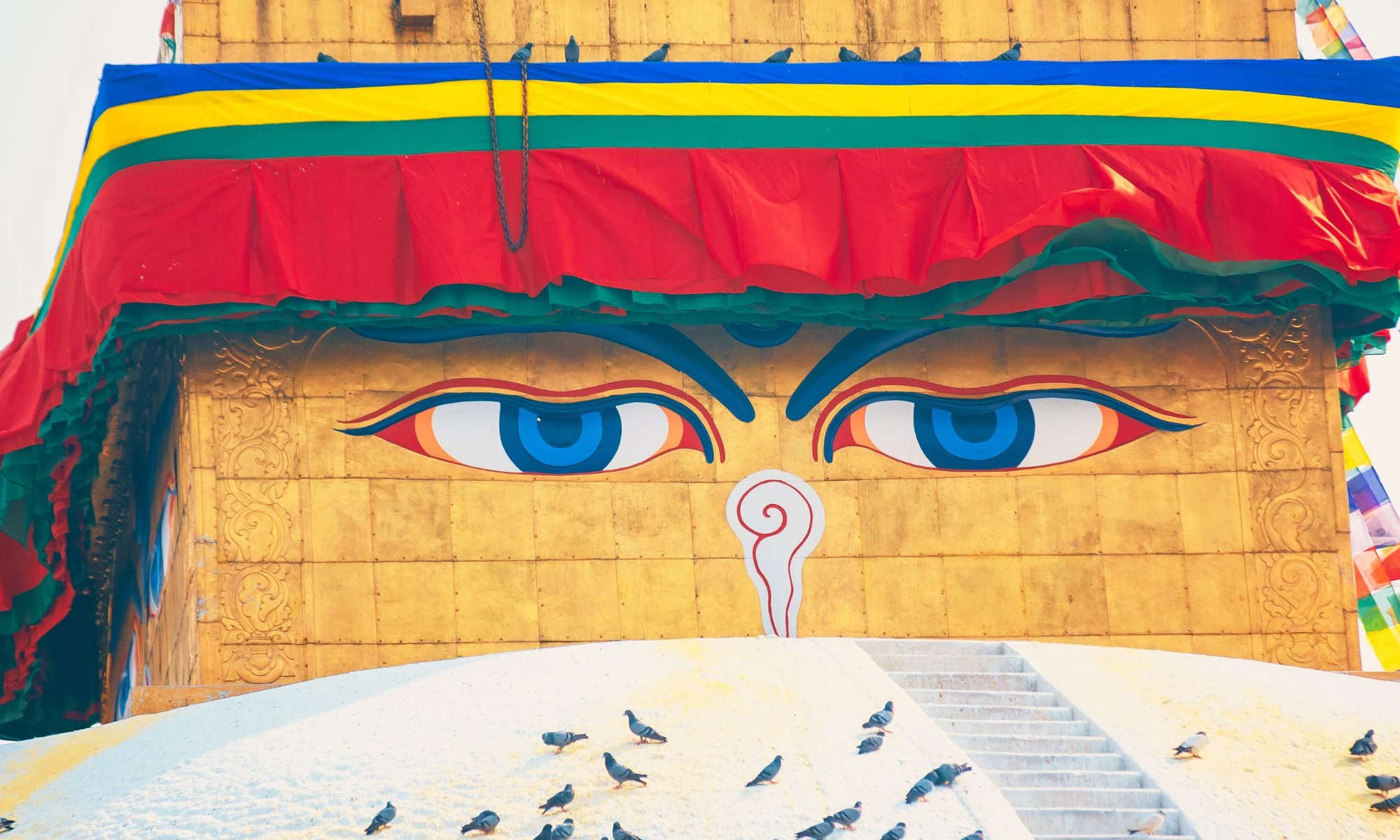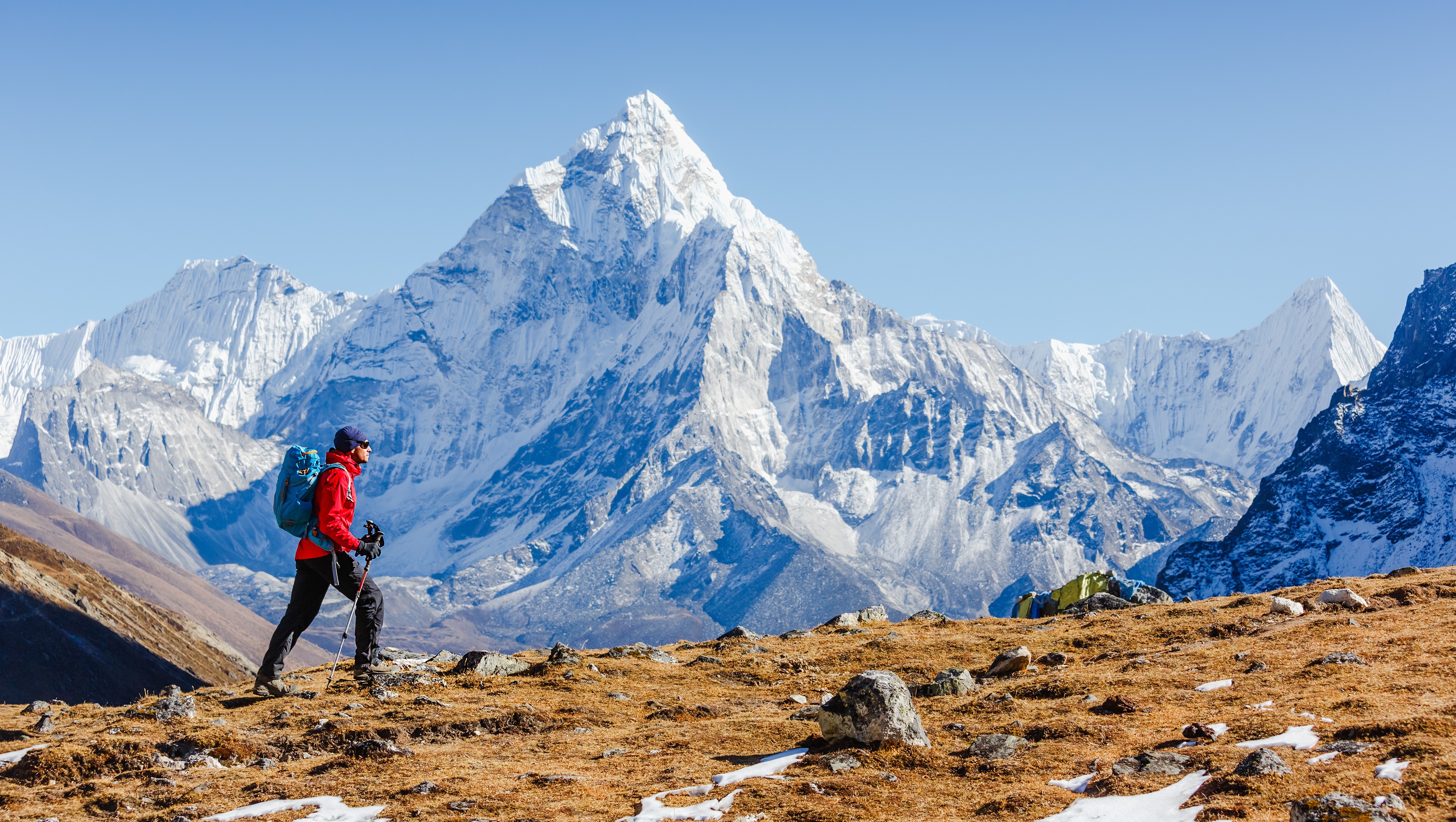

To enter Nepal, India, Tibet or Bhutan you will need to have a valid passport (with at least 6 months remaining after the date of your departure) and you will need a visa. In addition, depending on where you visit, you may also need National Park permits and trekking or climbing permits.
You are responsible for ensuring you have a valid passport and for organising your visa for Nepal and India. If you are travelling to Bhutan or Tibet, we arrange the required visas and travel permits on your behalf. We also arrange all the necessary trekking, climbing and National Park permits required, as per the details of your trip.
Visa requirements for Nepal
Most visitors to Nepal require a visa, with just a few exceptions. You can apply for your visa in advance via the Nepalese Embassy or Nepalese Diplomatic Mission in your home country or, the easiest option for most people, is to obtain your visa on arrival, at Tribhuvan International Airport (TIA) in Kathmandu. Please note that nationals of some designated countries must obtain their visa before arriving in Nepal and will not be granted a visa on arrival. We advise checking your eligibility and the full visa requirements on the Nepalese Embassy website via the link here.
Visa fees
Fees for on arrival visas are paid at the Visa Fees Collection Counter in the arrivals hall of the airport. You can pay by card or cash and there is an ATM in the hall. In case the ATM is not working we advise you to carry some cash, at least enough for your visa fee, just to be sure.
The fees are as follows:
15 Days – 30 USD
30 Days – 50 USD
90 Days – 125 USD
Gratis Visa (Free Visas)
Gratis Visa is issued free of cost for the following categories of Visa applicants:
When you arrive at Kathmandu airport you will need to do the following 3 steps:
1. Complete the online Tourist Visa form using one of the Kiosk machines in the Arrivals Hall of the airport. You can also do this in advance, which is recommended, using the official Department of Immigration website. Go to https://nepaliport.immigration.gov.np/ Select your point of arrival which will be Tribhuvan International Airport (TIA) and the complete the form with your passport and other details as requested.
If you complete the form online, you will receive a confirmation of submission receipt with a barcode. You will need to print this out and bring it with you in order to obtain your visa. The online submission is valid for 15 days from completion. If you arrive in Kathmandu more than 15 days from completion it will be invalid and you will ned to complete a new form.
If using the kiosk terminals at the airport to complete the form, you should be able to print it out once completed but we advise taking a photo on your phone of the final confirmation screen showing the bar code. If it does not print out for you, you can show the photo as confirmation at the Visa Fee Payment Counter.
2. Pay for your visa - Once you have a printout or photo of your completed visa form, you need to pay for your visa at the Visa Fee Payment Counter, also in the arrivals hall area. You’ll be given a receipt which you must keep as you will need it when you go through the Immigration desks.
3. Go to the Immigration Desks area - this is the final stage of the immigration process. You need to proceed to the Immigration Desk area with your online form, payment receipts and passport where your application will be processed by an Immigration Officer who will then issue your visa.
Currently, passengers travelling to Nepal by air or land routes are no longer required to provide proof of COVID Vaccinations (COVID pass) or a negative PCR test report of COVID-19. However, this advice is subject to change and we do advise you check before travel. It is your responsibility to ensure you have a valid passport and comply with all the necessary requirements to enter Nepal or any of the other destinations where we operate.
Visa requirements for India
All foreign nationals are required to have a valid passport and Indian visa before entering India. It is your responsibility to organise your visa for India.
For most people the easiest way to do this is to apply online for an e-visa using this link to the Government of India's official e-visa application web page, where you will also find details of who is eligible for an e-visa, explanation of the application process, information on current visa fees and a list of frequently asked questions (FAQs).
You will need to be able to pay for your e-visa online. When your e-visa has been approved (usually within 72 hours of application), you will receive your Electronic Travel Authorization (ETA) by email. You need to print a copy of this and bring it with you to present at one of the Immigration Check Posts on arrival to Delhi or another arrival point in India, where your passport will be stamped with your e-visa.
Visa fees are specific to your country and the type of tourist visa you apply for - whether that's for a one month visa or a one or five year visa, depending on your travel plans. Most travellers will only need a one month (30 day) visa which currently costs USD27.50 for UK travellers, approximately GBP25.00. There is also a small processing fee charged on top of the visa fee.
Visa requirements for Bhutan
You will need a visa and entry permit in order to visit Bhutan. This is something we organise on behalf of our clients and in order to do so, we request a copy of the photo page of your passport and a colour passport size photo, before your arrival to Nepal or India, from where you then fly to Bhutan.
Bhutanese visas and entry permits are issued by the Department of Immigration, Ministry of Home and Cultural Affairs in Bhutan, and tourist visas can only be requested through licensed tour operators in Bhutan. Once approved and issued, we will provide a copy of the visa to you to use for travel to Bhutan.
When you arrive in Bhutan you must present your passport, 2 passport colour photographs and the non-refundable visa fee of USD$40 per person to receive your visa sticker. The actual visa is only issued on arrival in Bhutan but must be applied for in advance through a tour operator and you must receive visa approval before you travel to Bhutan.
Your passport must also be valid for at least 6 months after your departure date from Bhutan.
In addition to the Bhutan visa and entry permit, all travellers to Bhutan must pay a daily Sustainable Development Fee (SDF). More information on this is listed separately in the FAQs section.
Visa requirements for Tibet
To enter Tibet travellers must have a Tibet Travel Permit and a Chinese visa. All travel permits and visas are controlled and issued by the Chinese Authorities, for example by the Chinese Embassy in Kathmandu.
For all our clients travelling to Tibet, from Nepal, we organise the required visa and permit on your behalf. In order to do this we will ask for some information including a copy of the photo page of your passport, in advance of arrival to Kathmandu. We use this to apply for your visa and travel permit which must be approved and issued before you travel to Tibet.
You will need 3 passport photos for your Tibet permit and the current cost of a Tibet visa/permit on a one day visa service (most commonly used by travellers) is:
British, Australian and New Zealand passport holders: USD $120
USA and Canadian passport holders: USD $220
If you are arriving into Kathmandu earlier and have sufficient time before travelling to Tibet, it may be possible to use the 3 or 5 day embassy visa service in Kathmandu, with a lower visa fee.
Please be aware that visa fees and entry requirements for Tibet are subject to change and the border to Tibet can be closed at times. We will keep all our clients updated with any changes and we recommend before booking any trip to Tibet that you contact us to discuss the current information on travel to Tibet.

Get our latest articles, travel inspiration, promotions, exclusive invites and more straight to your inbox.
